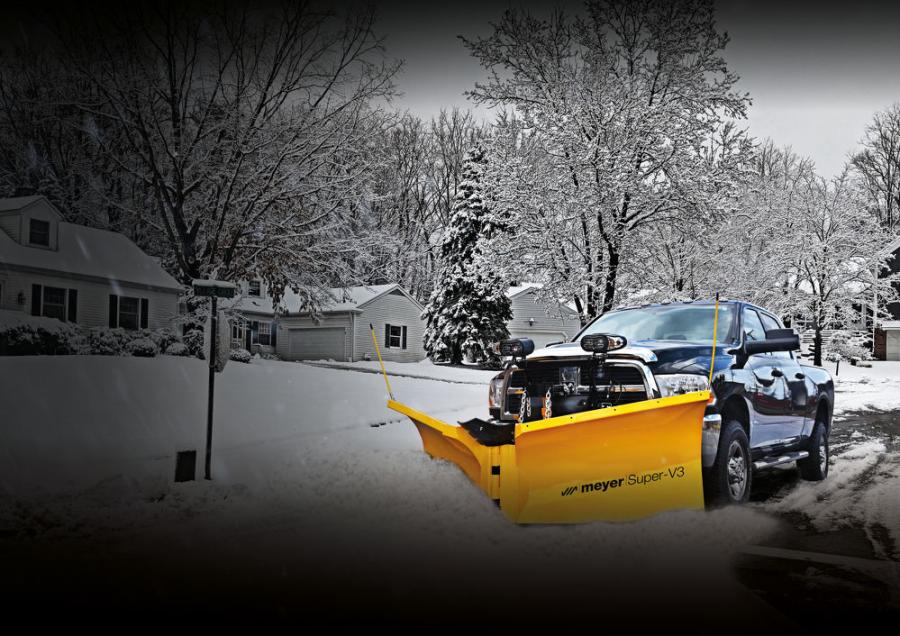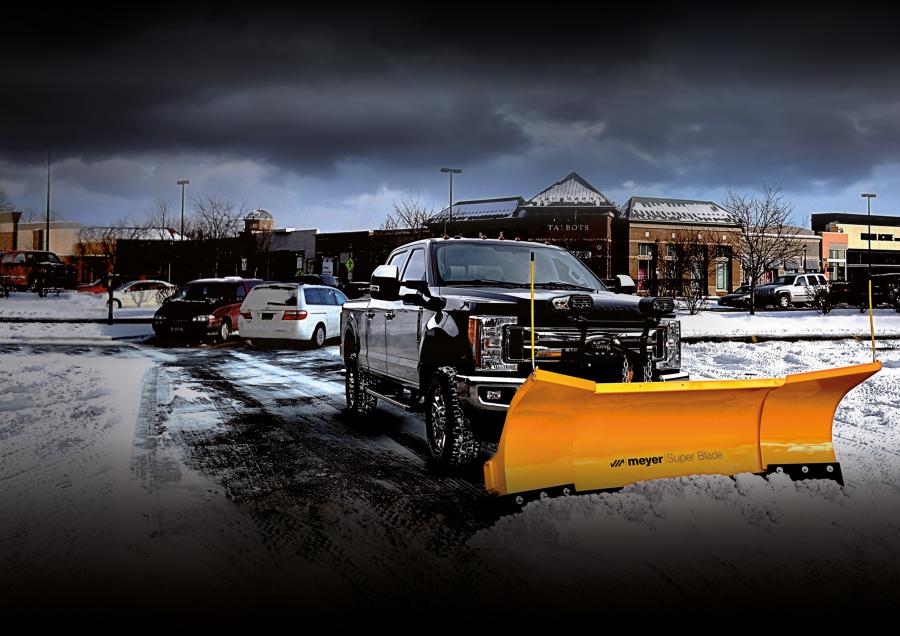Mike Z., customer service manager of Hiniker, demonstrates how to lubricate all the moving parts to ensure your snowplow is ready for the upcoming winter season.
When winter weather conditions come around, it's snowplows to the rescue as highways, roads and streets are cleared of ice and snow, and maintained for everyday use. And though that's the only season we might see this equipment in action, it takes regular care and repairs to ensure all that machinery that's taken a beating from hours of operation will still perform as it should when the next snow season rolls around. To ensure your snowplows are maintained in good condition, here are some important reminders from snow and ice equipment manufacturers.
Matt Morrison, director of sales and marketing at Minnesota-based Hiniker Company, designer and manufacturer of snow and ice removal equipment, shares the following as part of a Pre-Season Snowplow Maintenance Checklist:
- Change snowplow oil if it wasn't changed in the spring, as spring is the best time to change the oil and remove contaminates.
- Check cylinder for pitting, peeling and leaks. Spray exposed cylinder rods before moving the cylinders; this will help pull the lubricant into the seal. Use a product like fluid film or WD-40.
- Inspect electrical system; clean all battery connections; use dielectric grease on all connections; and inspect harnesses for damage.
- Lubricate all pivot points. Inspect cutting edges and skid shoes; replace if worn and order a spare. Inspect and retorque all hardware on both the plow and the truck mount. Inspect plow and truck mount for damage.
- Headlight function and aiming, adjust if needed. Perform basic maintenance on the plow truck — battery, drive train, tires, charging system.
Starting from inspecting all hardware, check all bolts, runners, welds, trip springs and fasteners on the plow and the mount for anything that may be cracked, missing or loose. As all these parts are prone to corrosion, be sure to clean and replace as needed.
Tighten everything so the plow stays intact through the next few months of activity and performs as it should. As with all equipment, many moving parts enable the smooth functioning of the snowplow. Lubricate all sliders, pins, exposed cylinders, etc. with oil or grease, especially if the machine has been in storage for a long period of time, to reduce wear and tear.
Address electric components like plugs and connections and battery terminals with dielectric grease to protect from corrosion and dirt. The smaller parts can be easily missed but these are the components that need to be in excellent shape to ensure your snowplow functions its best when those blizzards and snowstorms arrive.
When it comes to the snowplow's hydraulic systems, look for splits, cracks or leaks and other signs of damage on hoses and fittings as these affect plow functions. Considering this is the heart of the equipment and affects the moldboard. Troubleshooting ahead of time is crucial. Change the hydraulic fluid per specifications from manufacturer. Do not mix different types of fluid and remember that too much fluid is as much a problem as too little.
Ohio-based Meyer Products, manufacturer of high-performance snow and ice control equipment and management solutions, also offers a handy pre-season plow maintenance checklist (go.pardot.com/l/844753/2020-02-13/mdt4zx) that covers the basics — from checking springs, nuts, bolts and pins for wear and tear to inspecting hoses, couplers and rams for leaks or rust — to additional pointers such as only using manufacturer-approved fluid when replacing hydraulic fluid and cleaning the battery and battery terminals.
Keeping an eye on the condition of the cutting edge and plow shoe is equally important. When properly cared for, they maintain the structural integrity of the equipment. Their longevity is dependent on a few different factors, including the make and material; the surfaces on which the snowplow is used; and the frequency of use. Ensure the cutting edge is properly aligned to reduce wear and tear and poor performance.
Replace plow shoes as needed based on the manufacturer's instructions. And if the powder coating on the plow displays any rust, then a quick touch up might be necessary. Any chipped paint or exposed metal must be touched up right away to ensure the plow doesn't sustain further damage during snow season. If the plow frame is exposed or there is rubbing on the moldboard, then you've waited too long to save those parts.
While carrying an emergency kit for personal safety is always recommended, also consider maintaining an emergency kit that will be helpful in case of any untoward incidents or quick fixes while on the job. Include hydraulic fluid, hoses, solenoids, fuses, springs, safety lights, tow straps and ice melt, sand or kitty litter for unexpected icy conditions.
Finally, how you store a snowplow when it is not being used also can play a part in how well it functions when you do put it to use. Plow blades must be cleaned and inspected before storing in a dry place indoors to protect from the elements when not in use. If storage outdoors is the only option, then place the snowplow at an elevated level on a raised platform or pallet to avoid direct contact with the ground surface. Protect electrical connections, grease moving parts and remove any rust. Release the tension on the trip return springs as they don't need to be held as tightly in place as when the snowplow was in use.
With these checklist items, you should be well on your way to maintaining those snowplow blades so they last longer no matter the work they perform. Always remember to check on resources available from the manufacturer on maintaining parts and accessories and when in doubt, call the dealer or sales rep for guidance. A little caution ahead will see you avoid any troubles through a long and busy winter. CEG
Ruksana Hussain
Ruksana Hussain is a Los Angeles, California-based award-winning journalist with 19 years' experience working with local, national and international print and digital media for consumer and trade markets. As a magazine editor and features writer, she covers a broad range of topics including construction and design, diversity and inclusion, data privacy and security, and more. She earned her bachelor's degree in sociology in India. Leisurely pursuits include traveling, random researching and attempting word puzzles of any nature.
Read more from Ruksana Hussain here.
Today's top stories
















